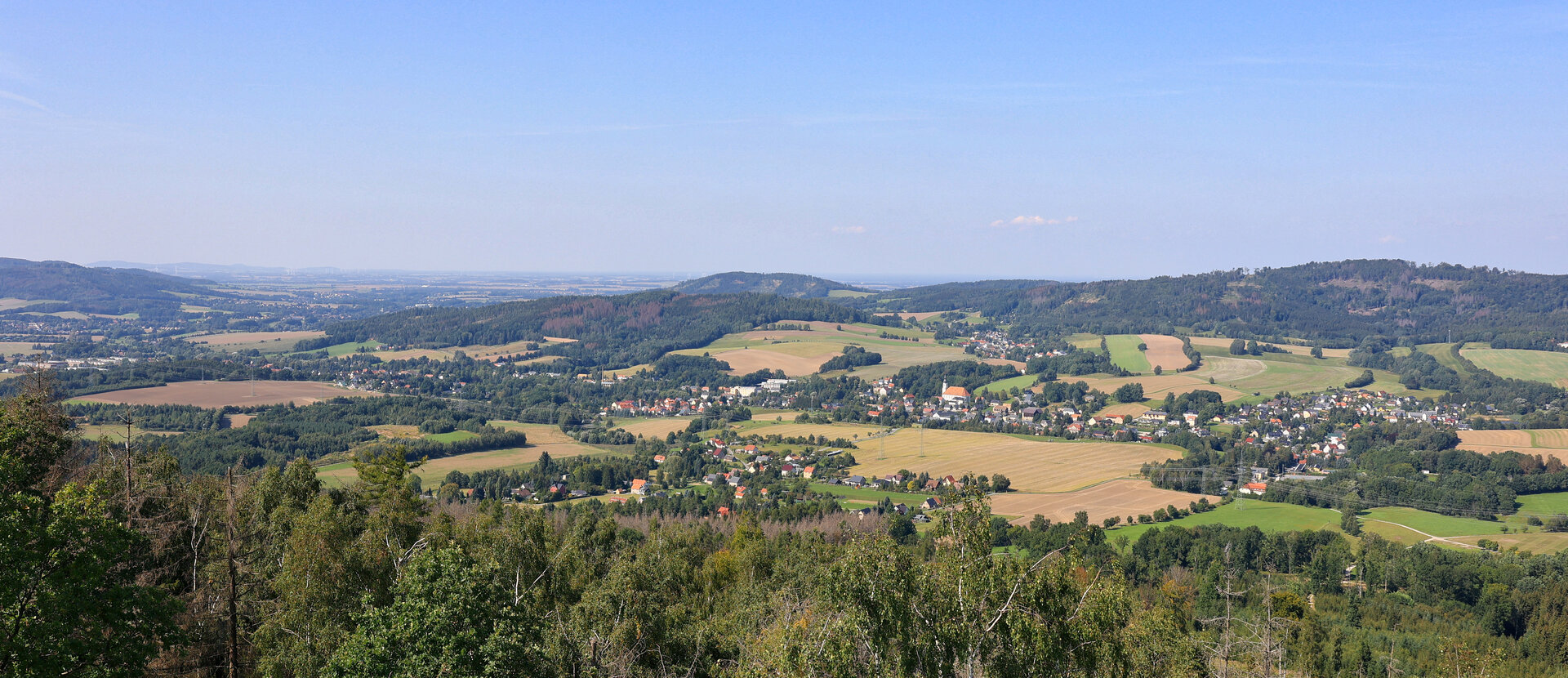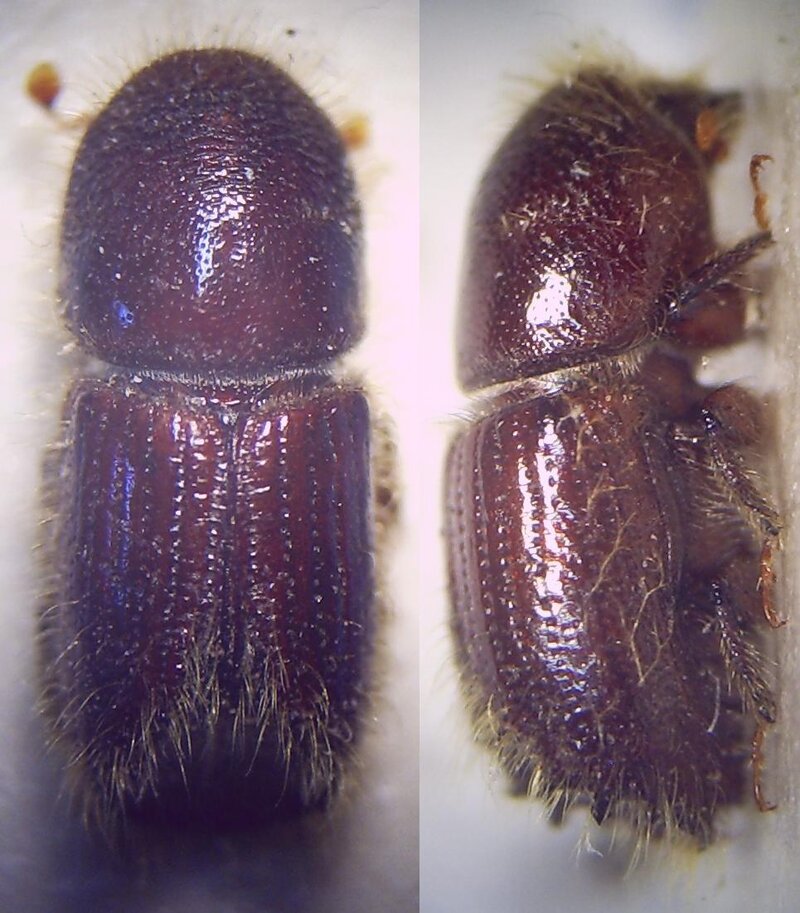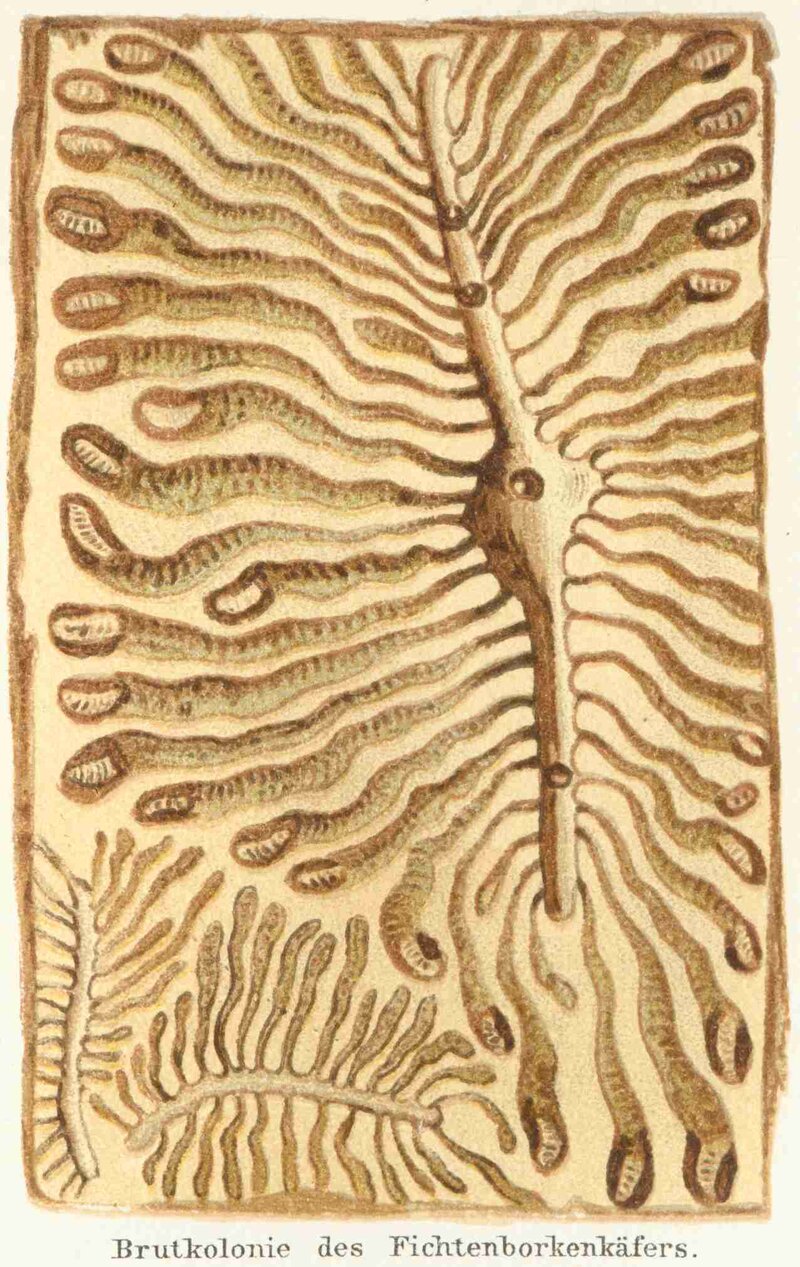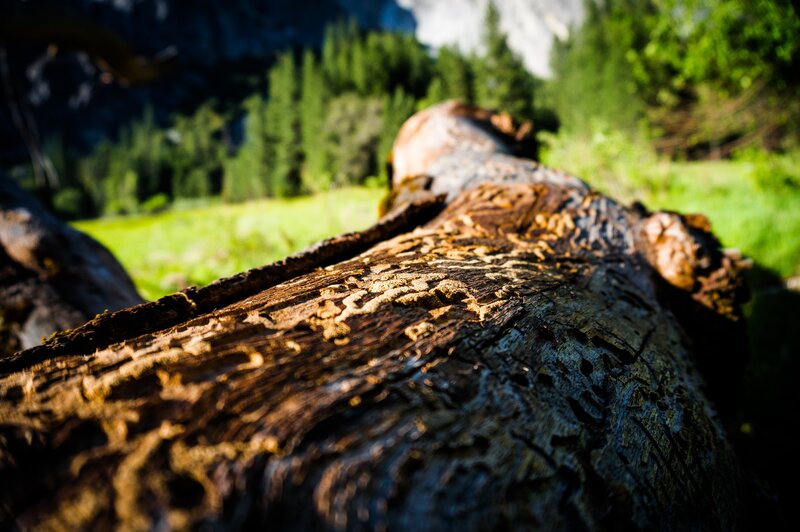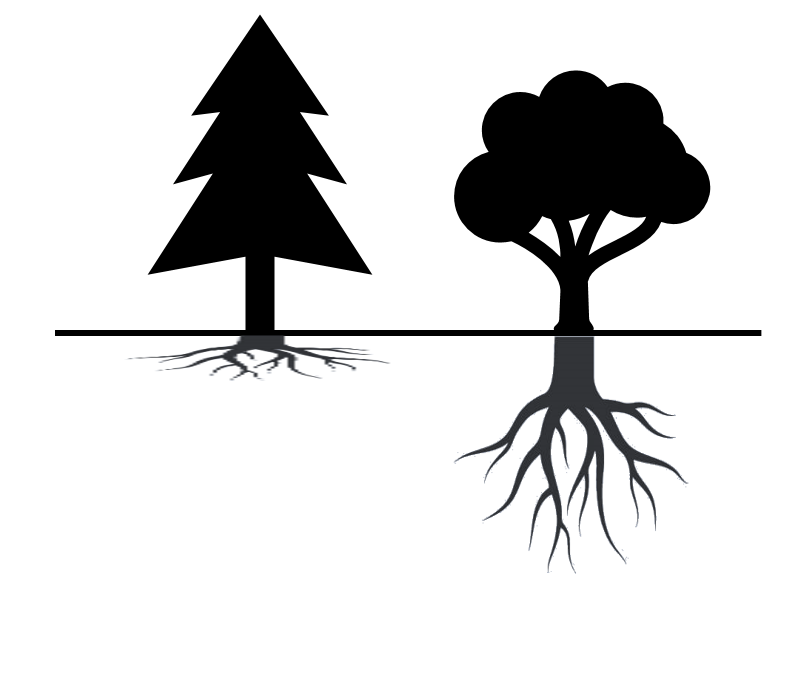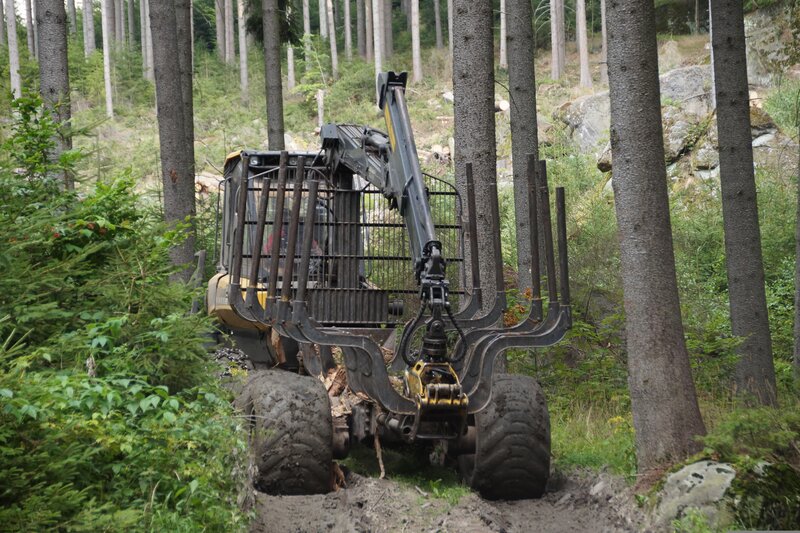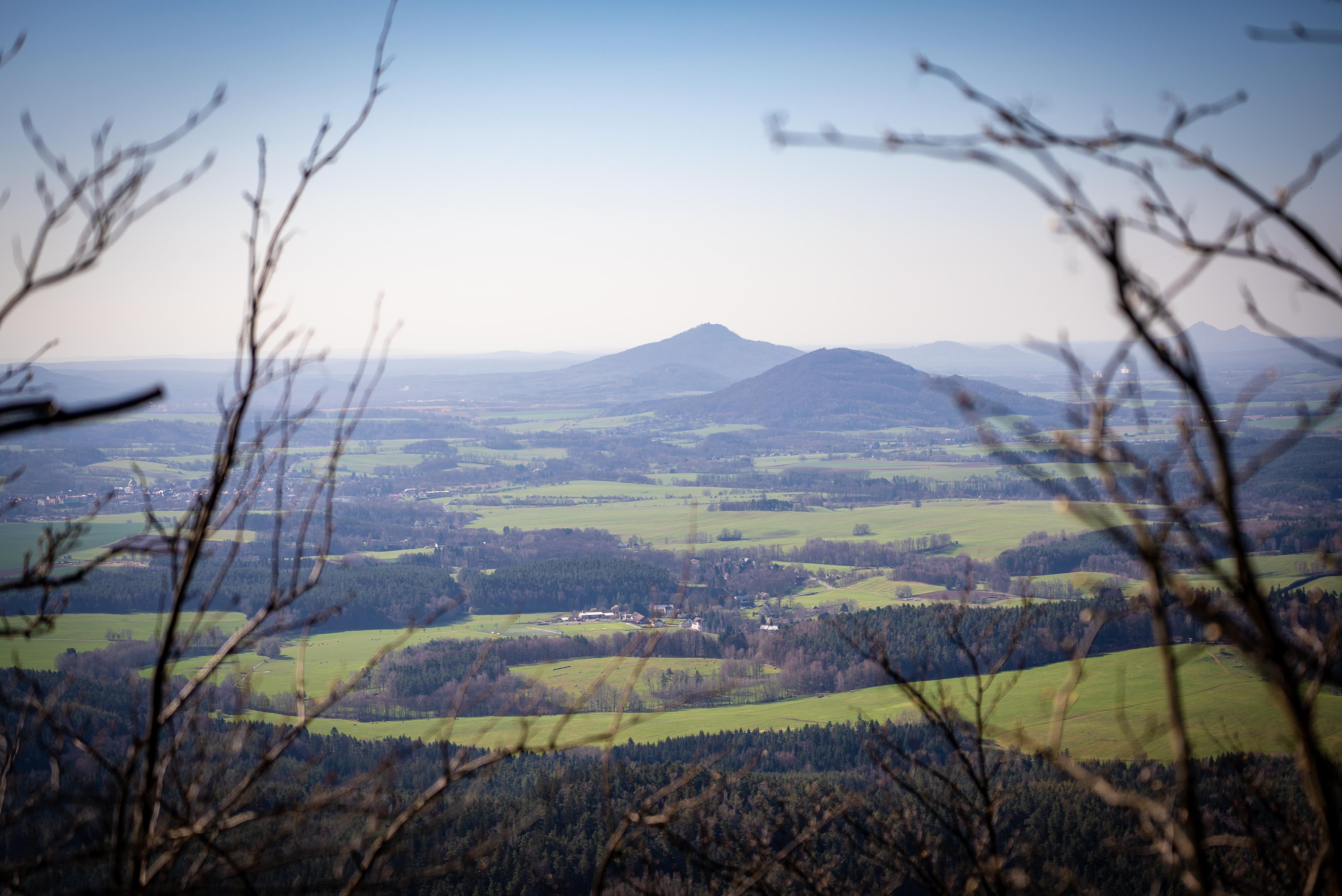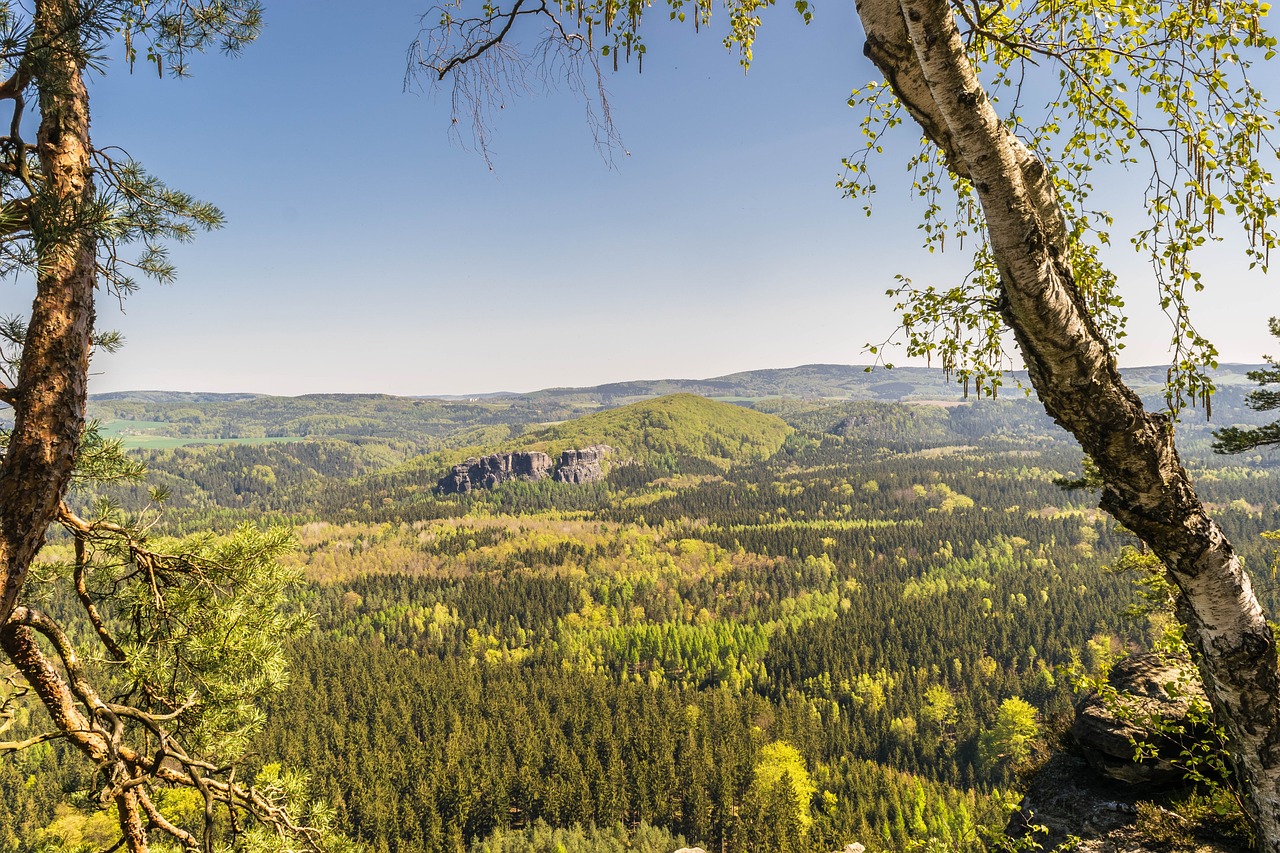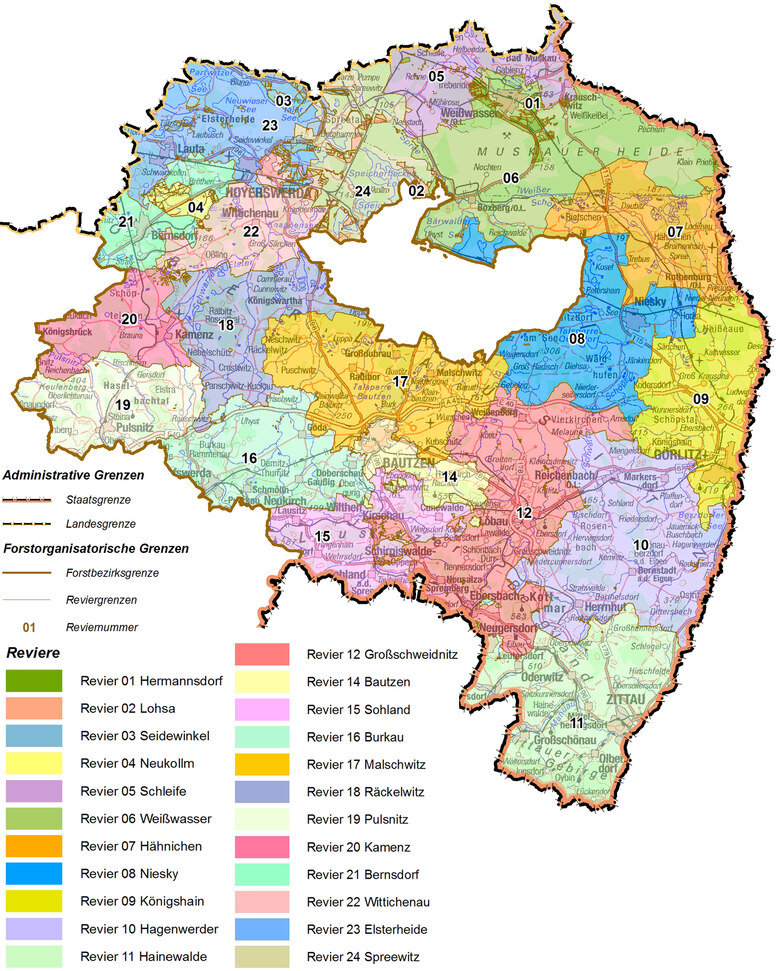So says an old German proverb. From a forestry point of view, however, this cannot be left uncommented.
Everyone has the images of the Upper Lusatian forests in mind. And it is not just here, but all over Germany, that the terrible sight haunts us:
Entire forests and stretches of land criss-crossed by deep snow, cut down or partially cleared. What remains are cold, barren expanses that give pause for thought and raise many questions. Why have the forests of Upper Lusatia been so badly affected? Will the forest recover? And why is the bark beetle not the real problem?
It is difficult to find suitable answers to these questions. But we would also like to do our part to come a step closer to solving these problems. That's what we want to do with this page.
We want to help educate, inform and raise awareness of the explosive nature of this issue.
On this page we would like to provide you with information on the subject of "Bark beetles in the forests of Upper Lusatia".
We also provide information graphics, contacts of experts and useful information and links.
What you should know
The forest BEFORE the bark beetle infestation
The mixed forests of Upper Lusatia are characterized above all by a unique diversity in the vertical cross-section. For example, the forest areas around the Muskauer Heide in the north of Upper Lusatia are primarily characterized by pine trees, although not always of natural origin. This is mainly due to the mostly predominant sand and gravel layers. The counterpart is formed by the spruce forests in the south of Upper Lusatia, which are mostly artificially induced. While the shallow-rooted trees often thrive naturally in mountainous regions, they were also planted in flatter areas due to their rapid growth in order to boost timber production in the region. Nevertheless, beautiful deciduous and mixed forests can still be found here and there.
The forest WITH bark beetle infestation
If an area is infested by the bark beetle, entire parts of the forest are often affected. The shallow-rooted spruce forests in particular find it very difficult to defend themselves against the insects during long periods of drought. As they develop very quickly and then swarm, it is rare to see only individual groups of trees infested, even though this was not uncommon until a few years ago. However, it is always important to mention that the bark beetle is not a new phenomenon. Rather, it is due to the long dry summers that the animals find it relatively easy to overcome the trees' natural defense mechanisms. In addition, there are structural problems in particular: small-scale, fragmented ownership structures and the differentiated commitment of forest owners to combating infestation are contributing to the current situation.
The forest AFTER the bark beetle infestation
Once the forest has been cleared of bark beetle infestation, it takes a long time for it to fully recover. It is also important to mention here that the bark beetle has always existed and that there has always been a natural selection of diseased and weakened trees. On the one hand, this ensures a progressive diversity of plant species and, on the other, a change in forest areas. Furthermore, a forest will never be complete without bark beetles. Like most other insects, it is part of a healthy and living forest.
As bad as the cuts are, forest owners can also see them as an opportunity to restore biodiversity and diversity. Irrespective of this, the German forests continue to be under enormous pressure from the changing climate. Regular and long periods of drought will continue to pose a threat to native flora that should not be underestimated.

Sachsenforst has produced a leaflet on correct behavior in the forest. Among other things, the following details are requested:
1. enjoy nature with all your senses. Avoid noise. Protect the forest and nature in your own interest and for those who come after you.
2. litter does not belong in nature, is harmful to animals and encourages parasites, pests and diseases. Plan your visit so as to avoid litter and take everything you bring back with you.
3. natural areas always have an owner. This owner designs and manages the areas and makes them available for recreation. Remember that people work in the forest. Therefore, forestry work, obstacles, uneven paths or vehicles should always be expected on a tour through the forest.
These and other rules of conduct can be found in the current information sheet from Sachsenforst and can be downloaded.
Your contacts for further information on bark beetles
FAQ
Will the forest recover?
This question is not easy to answer. Although foresters and forest owners have been working for many years to increasingly diversify forests and avoid monocultures, forest change is a very lengthy process that can take several generations of trees. In addition, progress and developments are made more difficult or hindered by the influence of climate change, for example due to longer or more frequent periods of drought.
What impact does this have on me as a hiker?
As a hiker and nature lover, you have to get used to the images of bare and partially deforested areas for the time being. Even if the forest owners and foresters are working hard to repair the damage, it will still take some time for the forest to regenerate.
It is also possible that heavy machinery will be used to clear the damage more quickly, which could then affect the hiking trails. We ask for your understanding in view of the tense situation.
Why is there still so much wood in the forest?
There can be various reasons for this. If the deadwood is still lying untouched in the forest, it could be because it has been left in place for ecological reasons. This is usually not a problem, as the beetles have already flown out to look for a new host tree. The remaining dead wood can serve as a habitat for birds, insects and fungi.
If there are already felled trees in the forest, it is quite possible that forest owners will temporarily store the wood with the required minimum distance due to lack of time or space.
Why are the forests of Upper Lusatia more affected than others?
The forests of Upper Lusatia are characterized above all by the intensive afforestation with spruce in the last hundred years. Spruces are characterized by fast growth and low demands on their environment. However, as shallow-rooted trees, they are heavily dependent on rainwater as they do not have a deep root system to reach water from deeper layers of soil. If there are longer or more frequent dry periods, the spruces are weakened and more susceptible to diseases and pests.
When is the bark beetle "in season"?
Like most cold-blooded animals, bark beetles also retreat in winter and spend the cold months in the shelter of the trees. From around 16°C air temperature and dry weather, the beetles fly out again. Within a dry and warm year, the bark beetles can breed up to three generations.

